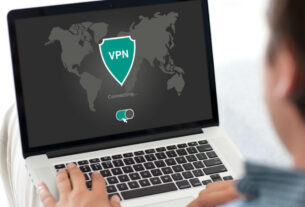IoT or Internet of Things is a digital network or physical devices and equipment such as screens, phones, sensors, and other appliances that work in synchronization and are connected through the Internet.
IoT has revolutionized all fields, whether home automation or the healthcare sector. From faster communication to remote monitoring, data analytics, security, and time management have made IoT necessary. With remotely connected devices, data is collected faster, and businesses can make better decisions on its basis quickly. In advanced systems, integrating AI helps make the machines decide on general cases or scenarios.
But with the ease comes the risks also. Although IoT has made the procession and communication faster, managing devices remotely can be a hassle when the network is extensive, multiple departments, and data filtering is required. For that, some Mobile Device Management tools provide a digital portal to register, handle, and monitor these devices.
Let’s look at how IoT makes the business work more straightforward and how we can manage this IoT device network efficiently.
What are the IoT Security Threats?
However, the IoT adds a lot of convenience and cost savings with faster working, but with it comes attached threats. Some of the significant concerns related to IoT device networks are:
-
Easily accessible devices to all
With the device network linked through the internet, these devices can be accessed using the same Wi-Fi router, internet, or application. So, hacking into the device or business network is easy for hackers. Proper security configurations and authentication passwords are required to protect the network from malware attacks and hacking.
-
Difficult data management
The data collection and storage are continuous on the internet, and you will have a load of entries. This data is useless and needs filtering before analysis and predictions. Also, even in the cloud, the data storage and categorizing can be complicated from multiple devices.
-
Device replication
Another major problem of IoT devices is similar device replication, which increases the load on the network, and the channel world requires extra bandwidth and data rates to transfer the data and smooth communication.
-
Risk of network hacking through any device
Internet providers or routers, etc., are accessible to all, so breaking into the network, and hacking devices are relatively easy for expert hackers, putting the whole enterprise device network at risk and increasing data theft risks.
-
Less secure data storage
All data is over the cloud, and there are no physical storage devices or points, which might make it risky for the system, and the data can be easily stolen or malicious.
-
AI attacks or bot networks
One of the main risks nowadays is that hackers create artificial bot networks, which are huge, and they connect with the devices and use them to hack and share malware with the organizational network. The AI-based malware apps and programs are advanced and can cause more damage than regular attacks.
-
Complex monitoring of remote devices
Remote devices are complicated to monitor and keep track of. As the network grows, keeping all in the loop and checking their locations, activity, and health status can be different for the IoT admin portals of an enterprise.
-
Risky application interface environments
API is co-working or joining interfaces where multiple networks or devices with different programming and settings can communicate. Hackers create corrupted APIs, and the device that connects to these interfaces gets hacked or corrupted, giving access to the other devices, organization network, and data.
Why Companies Need an IoT Device Management
With all the above risks, reliable IoT device Management is crucial for an enterprise network’s well-being and smooth functioning. IoT device management consists of all the tools, programs, settings, and equipment to manage remote devices and secure the threats in the digital world.
IoT device management can be done using Mobile device management tools such as Business, which provides optimum device management, control, and high-grade security.
Some of the key Benefits of having IoT device management measures are as follows:
-
More organized device deployment and enrollment procedure
With a management portal, the remote device can be enrolled instantly with the network when deployed in the field and grouped accordingly. At the deployment, the devices will be remotely configured and categorized according to function, location, and other details. This way, the admin team will know about all the deployed devices, the locations, the purposes, settings, etc.
-
Better stability and network reliability
Categorized devices and their complete control in the hands of the IT portal will give the organization stable network processing and data traffic. Also, the network is reliable with less downtime and faster diagnostic and device backing up.
-
Enhanced security protocols
Through an MDM or IoT device management, the enterprise can alter and apply security protocols as they like. Moreover, there are options for data access limits for all devices and only what the admin allows the devices to do and use. The admin will monitor and restrict data sharing, access, and other activities, which makes the security measures stringent.
-
Easier upgradation to new business models
With IoT-connected devices, there is no physical channel or device network. So, whenever the business plans to upgrade the model and implement new applications, interfaces, and user interaction platforms, it can do it easily without any issues. Also, MDM portals are scalable and adaptable with all the new policies and models.
-
Better data analytics and organization
With the IoT device management portal, the devices are grouped, and the data received from the device can also be filtered, categorized, and stored according to their location, sector, timings, etc. This way, the data experts get already organized data sets to analyze and generate predictions or make business decisions.
-
Simplified device upgradation
Device upgrade, new application installation, or integration with other components, such as sensors, appliances, etc., is relatively swift with the IoT device management portal. The IT team can program the devices, change the settings, and make the device work as required.
-
Improved device management and control
From turning on the internet connection on devices to changing their location setting or taking pictures through a camera, the admin can operate the devices remotely through an MDM and gets complete authority over all the devices.
Whenever they need to change the grouping, share the data, or add new policies and security setups, they can access and operate them without waiting. In addition, device management, health checks, and deleting the device in case of threat are no hassle.
-
Cost cutting and faster reach to customers
Managing hundreds of devices through one portal rather than in separate groups through multiple accounts is feasible and convenient. It also saves a lot of workload and hiring personnel. With centralized management, businesses get uniform services to the customers and have better reach all over.
Choose Business – Software to Manage Android IoT Devices
Using the Business software tool to manage your IoT device will be the best decision ever for your business. From unlimited device enrollment and listing to grouping data and devices, creating customized access limits and activity restrictions, listing list devices, and switching them off, Business has numerous unique features to make IoT device management efficiently. Have a look at some of the most prominent features of Business:
Automatic Alerts & Workflow
You can set alerts on critical parameters like low battery and excessive data usage so that you get timely warnings and take instant actions. There are options to automate device configuration by using a preset template. Thereafter, grouping, applying restrictions, and installing apps can be automatic for efficient device management.
Monitor Device Health
You can create groups of similar devices and monitor health parameters from a centralized dashboard. You can check the battery status, data usage, and several useful parameters. Besides, you can check the reports of device inventory and account activities to detect any abnormality.
Remote Troubleshooting
Remote troubleshooting of the connected Android devices is possible through Business. Once you detect abnormalities in device health, you can take control of the device remotely and fix them instantly.
You can troubleshoot unattended devices as well. There are options for voice chats to instruct the on-site staff if required.
Management & Security
Since security is a prime concern in IoT remote monitoring solutions, Business has strong features to ensure ultimate security. You can blacklist apps, prevent the installation from external sources as well as disable the factory reset option.
There is a multi-level authentication process to establish remote connections and end-to-end encryption for the connection to be fully secured. Moreover, you can ensure a safe browsing experience.
App Management
You can create a private app market with whitelisted apps to install as and when required. There are options to publish apps based on device type and device group. You can do staged rollouts to mitigate of risk of devices malfunctioning due to new updates.
You can remotely install apps on the connected devices without anyone physically accessing the devices. You can also schedule automatic app updates and monitor the progress of the process.
Location
You can monitor the connected Android devices remotely, and this is helpful when you have mobile employees working in the field. You can also set Geofencing so that you get alerts when the devices cross the permissible area.
Device tracking, monitoring, and analyzing activities can be done from one interface conveniently. You can check route history, make better route selections, and find out idle time to take actions accordingly.
Conclusion
Increasing IoT devices and electric fast businesses need close and efficient management and monitoring. Data privacy, network settings, and protection are all possible without investing so much through a reliable IoT device management tool such as Business. It offers a 14-day free trial to evaluate its exceptional features before committing to the premium version.
Author Bio:
This is Aryan, I am a professional SEO Expert & Write for us technology blog and submit a guest post on different platforms- Technoohub provides a good opportunity for content writers to submit guest posts on our website. We frequently highlight and tend to showcase guests.




